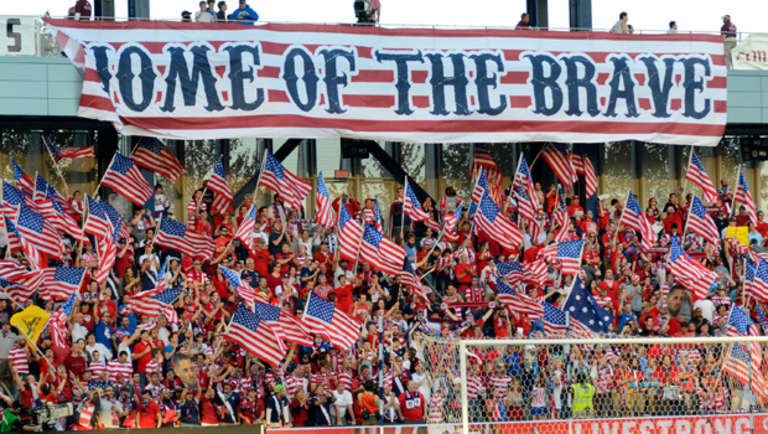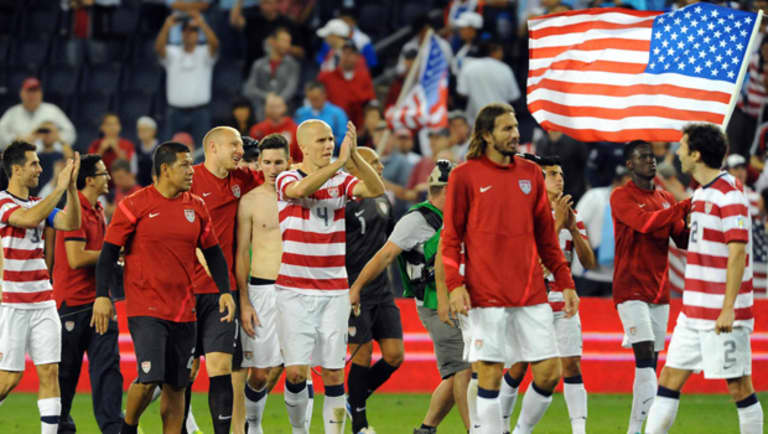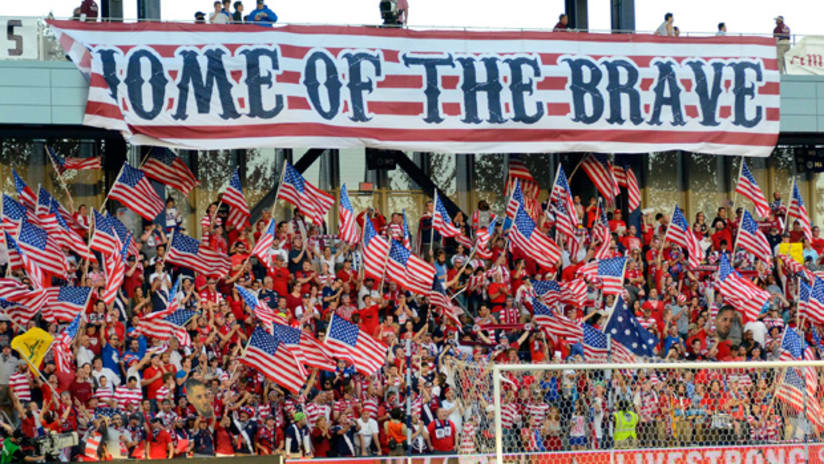The last time the US national team lost a World Cup qualifier at home, Jozy Altidore was 11 years old, Fallin' by Alicia Keys was just reaching No. 1 on the Billboard charts and, get this, the world's first orca calf was born through artificial insemination (according to datesinhistory.com). As you can see, we want to have some fun with this.
The date was Sept. 1, 2001. The place was RFK Stadium in Washington, D.C. The score was Honduras 3, United States 2. You can call it the end of the era in which the US weren't sure they would have a home-field advantage when hosting a qualifier because the crowd that day was probably a 50-50 split between Honduran and US fans.
But you can also call the result an anomaly.

The US may not get a lot of notoriety as a tough place to play. Not the way many of the other CONCACAF countries do, anyway. Probably because US crowds, while loud and getting louder all the time, do not come off as angry. Probably because, let's face it, the US has modern facilities and state of the art infrastructure. An opponent is not going to have a tough time finding a nice hotel anywhere in the United States. An opponent is not going to have to wonder if the drinking water is safe. It's just reality.
SmorgasBorg: Could Sept. 10 spell the end of USA-Mexico in Columbus?
But what's also a reality is the US, for a very long time, has been a very tough place for any team in CONCACAF to get points. Consider a few of these numbers as you prepare for tonight's critical match between the US and Costa Rica in Commerce City, Colo. (10 pm ET, ESPN and UniMas, Live chat on MLSsoccer.com). And thanks to former US communications guy David Applegate for his assistance.
Since the 1990 cycle, the US is 34-1-7 in home qualifiers. As a point of reference, six players on the current US roster (Sean Johnson, Brek Shea, Jozy Altidore, Joe Corona, Terrence Boyd and Omar Gonzalez) were born in the timeframe that cycle got started. In other words, we've got a generation of American players who know, the US don't lose at home.
Not in qualifiers.
But there's more. As we stated above, the game at RFK marked a change (a correct change) in philosophy when it came to selecting venues for these matches. If their CONCACAF rivals were going to put you in front of raucous and intimidating home fans, well, then the US from Sept. 1, 2011, forward, was going to do the same thing.

This is where Major League Soccer's stadium initiative has played a part. And where it will continue to play a part, as it was announced that
games later on in the CONCACAF Hexagonal will be played in Seattle, Salt Lake, Columbus and Kansas City.
READ: Attendance cap, surface no issue as Seattle finally get USMNT World Cup qualifier
Here are some more numbers: In stadiums built specifically for MLS, including the current cycle, the US are 10-0-2 and have outscored their opponents 29-3.
That's not where the MLS impact ends. Of the 29 US goals scored in MLS stadiums, 28 were scored by players in MLS or with MLS roots. Only Earnie Stewart's goal in the famous-first 2-0 victory over Mexico in Columbus (Feb. 28, 2001) was scored by a player who'd not worn an MLS uniform.
You can probably replay many of the goals in your head without even checking YouTube. Steve Ralston opening the scoring in Columbus against Mexico in 2005 and DaMarcus Beasley finishing off a perfectly drawn-up set play to send the US to Germany. Michael Bradley cleaning up the trash in front of the Mexican net in 2009. Jozy Altidore and Clint Dempsey scoring at Rio Tinto Stadium to help the US overcome an early deficit against El Salvador.
American players building upon a legacy.
That's right. Not creating a legacy, but building upon one. Because the US did not just begin dominating CONCACAF opponents at home in 2001. It's something that's been passed on, from players like Ricky Davis, Arnie Mausser and Boris Bandov in the 1970s, to players like Tony Meola, Tab Ramos, John Harkes, Paul Caligiuri and others in the 1980s.

World Cup qualifier preview: USA face pressure-filled match vs. Costa Rica
In trying unsuccessfully to qualify for the 1978 and 1982 World Cups, the US still went 5-1-2 at home. Obviously, those players, those teams, had trouble stealing any points on the road. But when at home, their pride came through. Think about it, in the last 28 years, in home qualifiers, the US have lost just twice. In the last 12 years, they are unbeaten.
Think about the string of 2-0 victories over arch-rivals Mexico. But also think about think about other results. Dominant victories and hard-earned draws. Think about 2009 and Jonathan Bornstein jumping up and heading in that goal in the 95th minute to earn the US a 2-2 tie against Costa Rica, in a game the Ticos needed and the US did not.
It was if they were saying, "Not here. Not tonight."
Surely, the players who will represent the US on Friday night in what's the most important qualifier held on home soil in many years know about this legacy. The US may not have an Azteca or a Saprissa Stadium to help intimidate its opponents.
But don't ever think the US is not a tough place to play.













